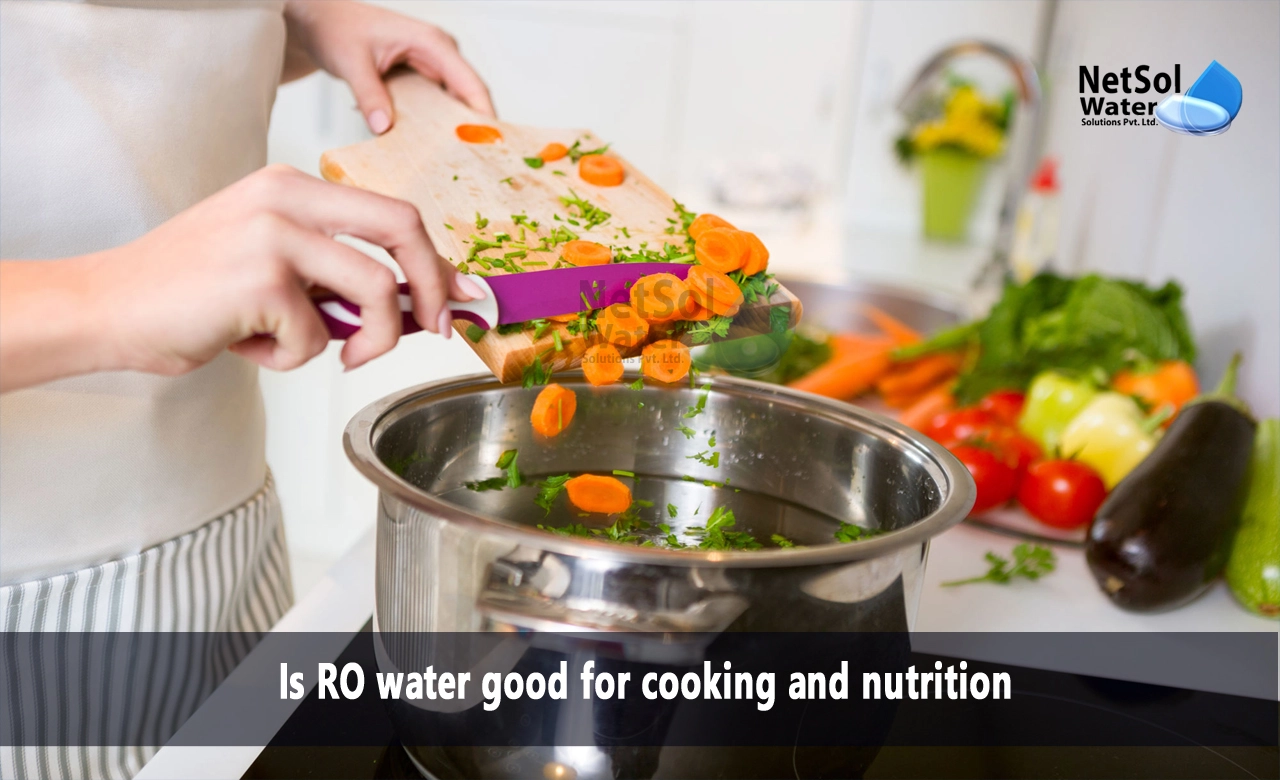Is RO water good for cooking and nutrition?
Clean, pure water is not only vital for drinking, but also essential for healthy home cooking. Water comprises a surprising percentage of many common foods and dishes. Using contaminated tap water to cook food can transfer toxins, chemicals, and heavy metals directly into your meals. This undermines nutrition and health.
Installing a reverse osmosis filtration system provides an unlimited supply of ultrapure water for all your cooking needs. RO effectively removes dissolved and particulate contaminants that drain water quality. Let's examine how cooking with purified RO water enhances cuisine safety and nutrition compared to standard tap water. We'll also explore considerations around RO's mineral profile and potential effects on recipes.
Improving Nutrition by Removing Toxins
Municipal and well water supplies frequently contain heavy metals like lead, arsenic, and cadmium. Chemicals from agriculture and industry like chlorine, pesticides, and pharmaceutical residues are also common. These toxins permeate foods cooked in unfiltered water.
Heat and cooking concentrates many contaminants even further. Boiling unpurified water as an ingredient draws toxins into steam and condensation. RO systems filter out such harmful dissolved contaminants to over 99% purity. This provides water free of these dangerous impurities transferring into your meals.
Many who install under-sink RO systems report immediately noticing enhanced flavor in soups, rice, pasta and other formerly tap water-cooked foods. Removing agents like chlorine and chloramine improves taste and aroma. But more importantly, RO eliminates dozens of toxins that silently degrade nutrition.
Softening Effects on Beans, Rice, and Grains
Hard water rich in minerals like calcium and magnesium negatively affects cooking certain ingredients. Beans, rice, and grains frequently fail to properly soften and cook through when prepared in hard, mineral-rich water.
This is because calcium and magnesium interfere with the hydration process during cooking. RO systems strip out these troublesome hardness minerals. Using softened RO water allows beans, rice, whole grains and fibrous vegetables to absorb liquid and achieve the proper tender texture during cooking.
No Lead Contamination from Pots and Pans
Lead can leach from common sources like old pipes, solder joints, and brass fixtures. But surprisingly, lead can also contaminate food from pots, pans, and ceramics. Acidic foods amplify lead leaching.
Preparing dishes with RO water instead of unfiltered tap prevents this dangerous lead pollution. RO water's corrosive effects on materials that contain lead are greatly reduced from purified water's neutral pH. Avoid lead uptake by using only RO water for cooking and drinking.
Considerations Around RO's Mineral Profile
Since RO filtration removes dissolved ions, the treated water has near-zero mineral content. Some wonder if this affects nutrition or recipes that rely on minerals in water for proper chemistry.
In reality, water only provides a tiny fraction of overall mineral nutrition, while foods give the vast majority. As for cooking effects, minerals in water play a negligible role in recipe chemistry compared to ingredients added. Made-from-scratch broths and stocks are one exception where you may want some minerals.
If concerned, minerals like calcium and magnesium are easily added back into RO water in precise amounts using mineral cartridges or supplements. Otherwise, RO's lack of minerals will not materially change nutritional values or cooking chemistry. The benefits of removing a host of dangerous contaminants far outweigh trace mineral considerations for most.
Preparing Baby Formulas with RO Water
Infants less than six months old have specific mineral needs for development. For parents preparing formula with RO water, the CDC notes adding bottled water that contains minerals may be advisable over exclusively using mineral-free RO water.
Another option is purposely remineralizing RO water for infant formula use. A pinch of pink Himalayan salt or electrolyte tablet per bottle provides sodium, calcium, magnesium, and potassium. Consult your pediatrician for guidance to provide your baby the right mineral balance from water used in formula.
Optimizing Your RO System for Cooking
To maximize the benefits of reverse osmosis water for home cooking:
- Install an independent RO faucet near your main food preparation area for quick and easy access. Use for cooking water instead of tap.
- Consider a larger capacity tank or booster pump for increased storage and faster water production. This prevents shortages for cooking tasks.
- Use RO water for all boiling, simmering, steaming, soaking and rehydrating needs. Never cook with unfiltered water.
- Verify filtration effectiveness periodically by testing TDS with a meter. Replace filters as needed to maintain purity.
- Add a remineralizing filter or supplements if concerned about very low mineral levels for special needs.
Conclusion
Cooking with properly filtered reverse osmosis water provides tangible benefits versus standard tap water. RO removes health-harming dissolved toxins, softens ingredients for better texture, prevents lead contamination, and improves flavors. While the lack of minerals has some considerations for infants, it generally does not affect nutrition or recipe chemistry. Overall, RO systems offer an effective method to purify unlimited water for all home cooking uses.




